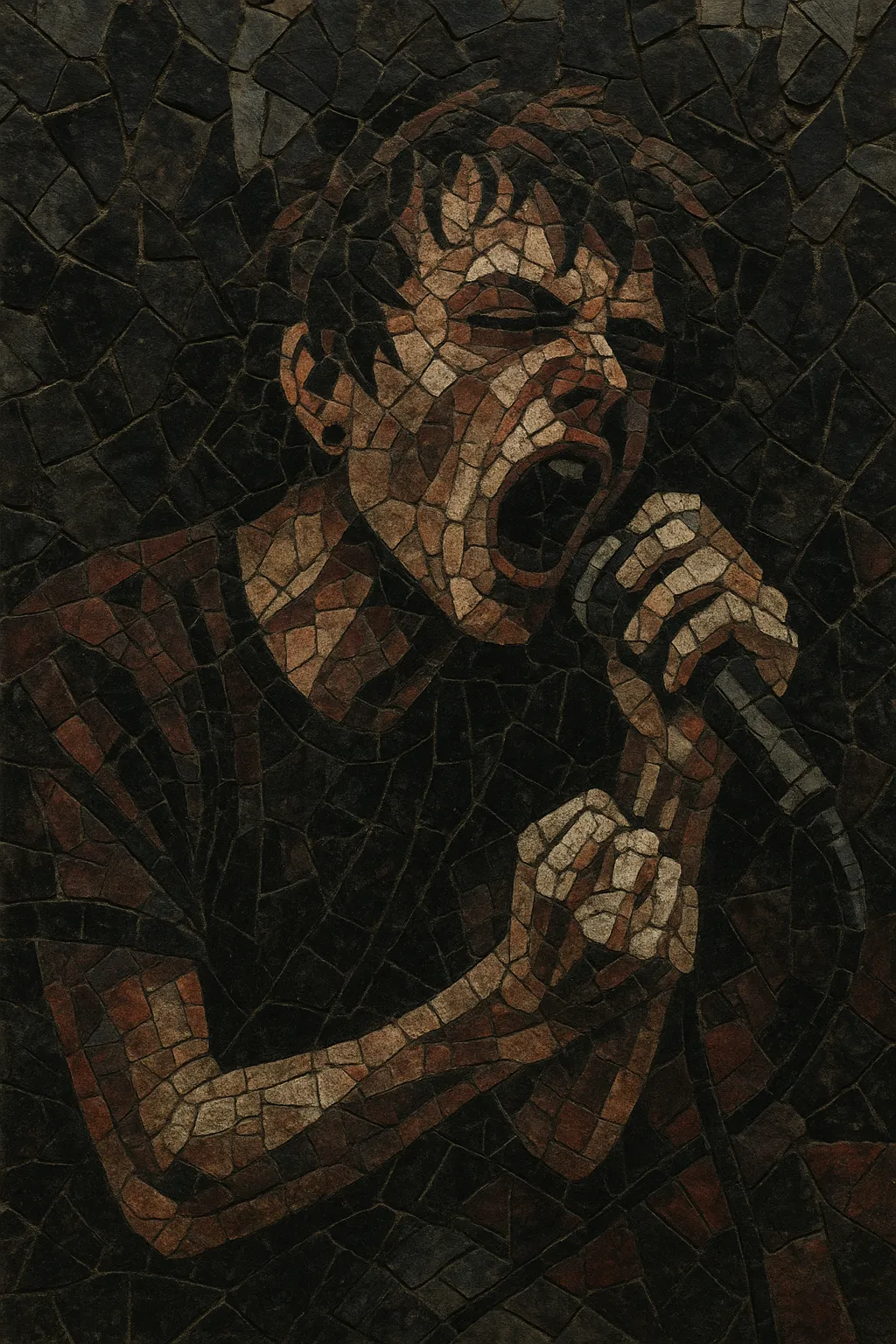
Emoviolence is a ferocious fusion of 1990s screamo and powerviolence/grindcore. It combines the emotional intensity and lyrical vulnerability of early screamo (“skramz”) with the speed, brevity, and abrasion of powerviolence. Songs are often extremely short (20–90 seconds), marked by sudden starts and stops, dissonant chord clusters, blast beats, and high‑pitched, desperate screams.
The style is deeply rooted in DIY punk ethics: raw, lo‑fi recordings; basement shows; hand‑assembled 7"s and tapes; and zine culture. The guitar tone skews thin and treble‑forward, the production favors live immediacy over polish, and lyrics often blend confessional fragments with political urgency.
The term “emo violence” was popularized tongue‑in‑cheek by South Carolina band In/Humanity in the mid‑1990s, but the sound coalesced across U.S. punk scenes soon after. Early Southern and Floridian bands such as Palatka, Reversal of Man, and Combatwoundedveteran pushed screamo’s volatility toward powerviolence speed and grindcore harshness, setting the template of frantic brevity and emotional catharsis.
By the turn of the millennium, scenes in the Northeast and Midwest—anchored by labels and distros like Level Plane, Clean Plate, Ebullition, No Idea, and numerous micro‑labels—cemented emoviolence’s identity. Orchid (MA) became a touchstone for the style’s frantic dynamics and lyrical opacity, while bands like Pg. 99 (Pageninetynine), Jeromes Dream, Usurp Synapse, and Neil Perry expanded its palette with feedback breaks, sudden silences, and dizzying start‑stop structures. DIY networks of basements, VFW halls, and living rooms were crucial for touring and the rapid swapping of splits and compilation tracks.
Releases favored handmade packaging, xeroxed art, and raw‑sounding live or single‑room recordings. Songs often eschewed conventional verse/chorus forms for explosive vignettes; sets were brief and overwhelming; and the community emphasized inclusivity, anti‑authoritarian politics, and catharsis over virtuoso display.
While activity ebbed after the early 2000s, emoviolence’s approach informed later waves of chaotic screamo and the theatrical, spasmodic edge of sasscore. Bandcamp‑era projects revived its lo‑fi immediacy, ultra‑short forms, and confessional writing, keeping the style’s DIY spirit central even as production tools evolved.

